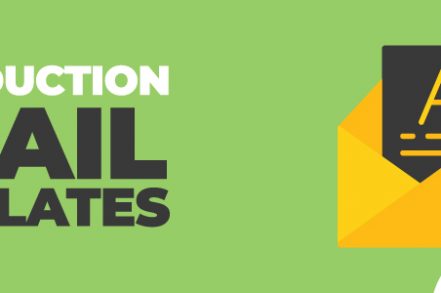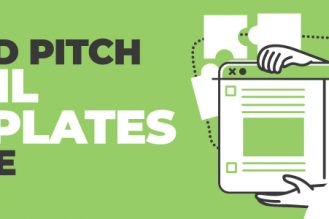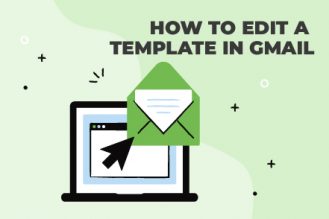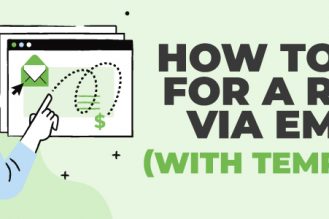Connecting with strangers over email is never easy. And writing one that actually gets a response is even harder.
It all starts with an introduction. There are various ways you can introduce yourself over email – it just depends on the level of connection you may or may not already have with a contact, or the business situation in which you’re reaching out.
Top tips for getting a response to an introductory email:
- Write a compelling subject line
- Make the first line about the recipient
- Explain your reason for reaching out
- Identify the value you will provide
- Include a call-to-action, if appropriate
- Show your appreciation for their time
- Follow up afterwards
Whether or not your email gets opened – and responded to – depends on how effective its content is. Here are five templates for some of the most common scenarios you’ll encounter to help you simplify the process, so you can focus on more pressing business activities.
8 Introduction Email Templates Samples
1. Cold introduction template
Goal: You want to connect with someone who doesn’t know you or your business.
Why it works: It focuses on them and how you will solve their pain point.
Cold outreach emails are messages you send to someone you don’t know, and with whom you have no other point of contact. They’re usually done to kickstart a lead generation campaign, to expand a contact list, or to reach new audiences.
But it’s tricky to get a response to a cold introduction email. It’s critical that you get to the point quickly. Let the recipient know how you found their name and contact details, who you are, and how you’ll help them, then back it up with evidence of how you’ve helped similar companies in the past.
Subject Line: [Contact’s name], can I take two minutes of your time?
Hi [contact’s first name],
I found your name [define specific source], and [personalized compliment].
We are [why you are a credible source] and we understand [identify a pain point]. Over the past year and a half, we’ve worked with [name two or three similar companies], and have helped them achieve [identify your number-one benefit]. I know that we can help [contact’s company name] too.
If this is on your agenda, then I’d love to schedule a brief 5-minute phone call to discuss how we can help you. I’m available at [x, y and z times]. Do any of these work for you?
If you’re not addressing this issue right now, or you don’t feel we’d be a good fit for you, I completely understand. Thanks for your time.
Regards,
[Your name]
2. Follow-up introduction
Goal: You want to reconnect with someone you’ve already met in person.
Why it works: You’ve already met, giving you a basis from which to expand on your key offering.
If you’ve met someone in person at an event or have been personally introduced by a mutual contact, then it’s a good idea to follow up with an email. You’ve already been formally introduced, so this email is a refresher. It will provide your new contact with your details and also give you the opportunity to both deepen your connection and emphasize how your offering can help.
Subject Line: [First name], it was great to meet you at [event]
Dear [first name],
I’m so glad we had a chance to meet at [event].
I understand from [mutual connection] that you [identify their pain point]. Over the past year, we’ve worked with [name two or three similar companies] and have helped them achieve [identify your number-one benefit]. I know we could help [recipient’s company name] too.
If this is on your agenda at the moment then I’d love to schedule a brief 10-minute phone call to discuss how we can help you. I’m free [x, y and z times]. Do any of these work for you?
If this isn’t something you’d be interested in at the moment, then I completely understand. Thank you for taking the time to read this, and again, I enjoyed meeting you.
Regards,
[Your name]
Additional Reading: How to Introduce Yourself in an Email
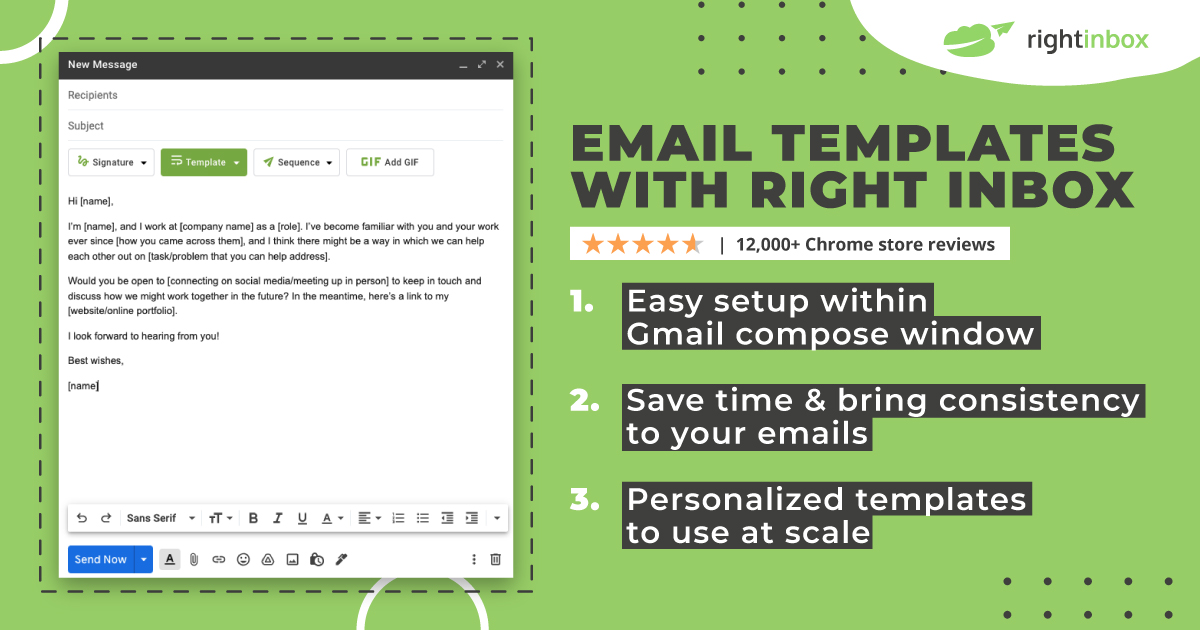
Try Right Inbox email templates – Install for FREE
3. Referral introduction
Goal: You want to reach out to someone with whom you have a mutual connection.
Why it works: Bringing in your mutual connection gives you weight as a recommended and trustworthy source.
This is an email you’ll send to someone a mutual connection has referred you to. This is probably the simplest path toward making a new connection that there is – people are more likely to be convinced by a recommendation (albeit implicit) than if they receive a cold email out of the blue.
Ideally, you’ll ensure that your mutual contact makes the initial email connection, cc’ing you both. Then, you can pick up the email thread from there.
However, if you can’t make that happen, try this template. Note that it’s quite similar to the follow-up email above, with a few differences.
Subject line: Hi [first name], [mutual contact] would like to connect us
Dear [first name],
I’m reaching out because [mutual connection] (copied into this email) suggested that we connect.
I understand from [mutual connection] that you [identify their pain point]. You might be interested to know that we’ve recently been working with [name two or three similar companies] and have helped them achieve [identify a key benefit]. Perhaps we could help [their company name] too.
If this is on your agenda at the moment, then I’d love to schedule a brief phone call to discuss how we can help you. I’m available [x, y and z times]. Do any of these work for you?
I appreciate the time you took to read this.
Regards,
[Your name]
4. An event-triggered introduction email
Goal: To use a behavior on your website to trigger an automated email to introduce yourself.
Why it works: You know that the target is interested in you, based on their interaction with your website. This email introduction builds on that, and can be more direct.
An event-triggered introduction email is a message that’s sent to a person who has visited a certain page on your site, or taken a certain action, like filling out a form or clicking on a “Contact me” button.
Although this email will be automated, it’s important that you make it as personalized and personable as possible.
Subject Line: Congratulations! What’s next?
Dear [prospect’s first name],
Congratulations on signing up to [newsletter/podcast etc]. You’ve taken the first step in achieving [identify a key benefit/offering]. Over the next few days you should expect [outline what correspondence comes next].
Attached is some additional information that you might find interesting.
If you’d like to chat more about how we can meet your needs, I’d love to schedule a brief phone call. I’m free [x, y and z times]. Do any of these work for you?
I look forward to hearing from you.
Regards,
[Your name]
5. Expertise introduction
Goal: To connect with an influencer with whom you have no prior contact.
Why it works: You emphasize your mutual passion and demonstrate what they’ll get in return.
Influencer marketing is a go-to tactic for businesses wanting to expand their exposure online. And while it can be daunting to reach out cold to influencers in your field, there are ways of finding a mutual connection.
But because you’re reaching out to a stranger to ask for something, it should be treated a bit like a cold sales email. The key is to be as brief as you can, get to the point quickly, and demonstrate what they can expect to receive in return.
Subject Line: [Influencer’s first name], I’d like to interview you for my podcast
Dear [influencer’s first name],
I am a big fan of [what they do], and [compliment or reason why you respect them].
I am [your one-sentence bio]. I know my audience on [name of podcast] would love to hear what you have to say, too, since we all share a passion for [your common area of interest].
In return for your participation, I would [benefit for them].
I’d love to schedule a brief phone call to discuss this further, if you’re interested. When would be a good time to chat?
I look forward to hearing from you.
[Your name]
6. The common interest Introduction
Goal: To establish rapport based on common traits or interests when introducing yourself.
Why it works: People naturally want to converse and do business with people who are most like them.
By starting the conversation with something that brings you together, you increase the chance that your message is received well.
Subject Line: [Contact name], I noticed X
Hey [first name],
I hope this email finds you well. I couldn’t help but notice that we are both members of (a LinkedIn or Facebook group). Personally, I joined because of (reason), and you?
I thought it could be beneficial to connect and learn about each other, maybe on Zoom this week? Let me know.
Regards
[your name]
7. The Ego Flattery Introduction
Goal: Create a receptive mood in your prospect by offering a compliment, or otherwise boost their ego with your introduction.
Why it works: Everyone’s favorite subject is themselves. Your prospects are no different.
If given the choice of boasting about yourself or your business, versus talking up the prospect, always choose the latter.
When you stroke someone’s ego, they are blinded to other emotions, such as distrust or doubt. In other words, they will be more open and positive to connect with you.
If you need to compliment someone on an achievement, item of clothing, or anything else, so be it. It sure beats not having your email read in the first place.
Subject Line: Your speech the other night…wow.
Hi [first name],
It’s just [your name] from [company]. You know, I saw your talk the other night that you gave during the event.
What really blew me away was when you said X. It made me reconsider the way we approach our sales as well.
So I wanted to take the opportunity to introduce myself and see if maybe there is a way to help each other out going forward.
Let me know your thoughts.
Sincerely,
[your name]
8. The Lost Puppy Introduction
Goal: Inspire empathy in your recipient, so they pass you along to the right contact person.
Why it works: We all have an innate desire to help other living beings. If you see a lost puppy, what do you do?
Most likely, you would not just leave it in the middle of the woods. You would help the puppy find its home or the help it needs to survive.
The same concept exists in business and marketing. If you come across as a lost person needing help, you are much more likely to get good results.
So this introduction email is all about being vulnerable and asking for help.
Subject Line: I was hoping you could help me?
Hi,
I’m not quite sure if I’m sending this email to the right person, or even the right department. My name is [your name] and I’m hoping to connect with the head of [relevant department].
Would that be you? If not, would you be able to connect me with the right person? Thank you so much, and I appreciate the time out of our day to help me out.
Best,
[your name]
9. The Higher Ideal Introduction Template
Goal: This gets somebody to sign on to helping your cause.
Why it works: People often do things for a higher purpose that they wouldn’t do otherwise. Using the appeal to higher morals can be a powerful way to engage someone in an email.
Let’s take a look at a great example:
Subject line: Hey there [first name]. [Mention cause].
Dear [First Name],
The reason I’m messaging you at this time is because of [The whales are disappearing, other good cause, etc.] and timing is urgent. Luckily our foundation is [Your projects or programs to solve the problem].
However, we need your financial assistance. Could I trouble you for a few minutes on the phone this week to talk about donation options? Thanks and talk soon.
Regards,
[Your name]
10. The New Announcement Introduction Template
Goal: To get someone to learn more about your product or service.
Why it works: This email will focus on curiosity, intrigue, and offering value. Ultimately you’re playing on a degree of greed here. Let’s take a look at an example:
Subject Line: Business owners who aren’t doing [new method] will fail.
Dear [First name],
If you aren’t using [New technology], you’re already falling behind. Industry data shows that [Interesting statistics] of business owners are embracing [New technology].
Luckily at [Company], we are pioneering the use of this to help brands like yourself get an edge over the competition.
When’s a good time this week that we can hop on a quick call to discuss the opportunity with you? Looking forward to connecting.
Regards,
[Name]
It’s not always easy to introduce yourself over email, or to know the most effective way to do so. Depending on the situation that requires an intro, you need to consider what your goal is and how you craft your message to achieve that goal.
That’s why it’s helpful to follow a template, either one of the above, or one you’ve crafted yourself. It will help you save time and also ensure that you’re giving your message the best chance of getting the response you need. Check out 100+ templates in our email templates hub.
Track emails, email reminders & templates in Gmail for free
Upgrade Gmail with the features it’s missing
Add to GmailDavid Campbell
David Campbell is the editor of the Right Inbox blog. He is passionate about email productivity and getting more done in less time.
